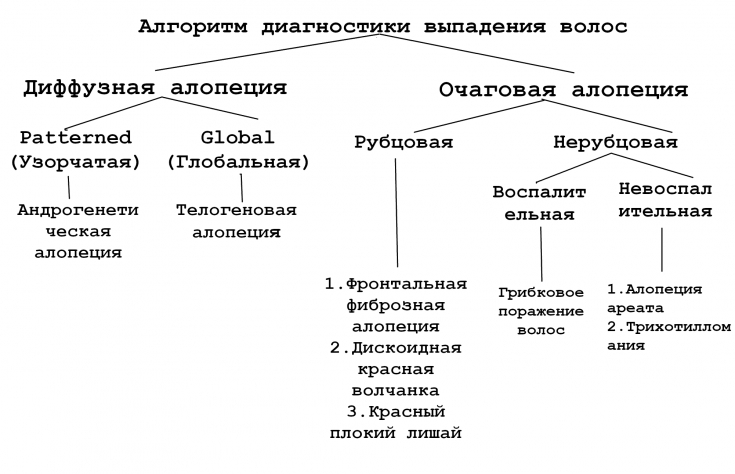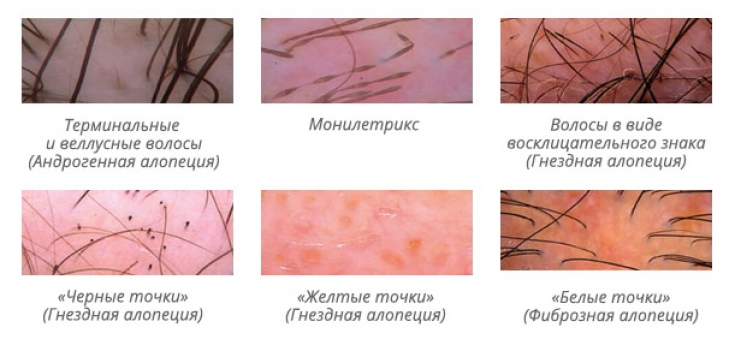Complaint about hair loss is one of the most popular in the practice of a specialist in aesthetic medicine. This problem worries patients so much, because hair is a symbol of beauty and an indicator of health. The most common cause of hair loss is androgenetic, focal and fibrous alopecia. Differential diagnosis of various hair lesions requires special attention, and most importantly – experience.
To facilitate the work of a doctor, a special diagnostic algorithm of the causes of hair loss has been developed, which you can learn more about estet-portal.com in this article.
- The main points of the hair loss diagnostic algorithm
- Major diffuse hairline lesions
- Diseases leading to alopecia areata
The main points of the algorithm for diagnosing hair loss
Due to the fact that the cause of hair loss can be a huge number of diseases and conditions, the diagnosis of alopecia is sometimes quite a difficult task. Therefore, for a correct diagnosis, it is important for a doctor to be clear and consistent in his actions.
The first thing that matters in the diagnosis of alopecia – this is an anamnesis. It is necessary to find out from the patient how long he has been suffering from hair loss, and also whether he has other symptoms associated with lesions of the scalp.
Read also: Periodic hair loss as a symptom of temporary alopecia

After a thorough examination, the specialist can more accurately determine which form of alopecia is present in a given patient. Often a doctor comes to the aid of a dermatoscope, which allows you to identify the presence of an inflammatory process of the scalp, determine the condition of the hair follicles and, & nbsp;actually, the hair itself.
Basic diffuse lesions of the hairline
The group of diffuse lesions of the hairline includes androgenetic and telogen alopecia, which are often accompanied not only by hair loss, but also by their thinning.
Read also: The main causes of hair loss and how to prevent them
Androgenetic alopecia occurs in both men and women, but in the fair sex, this disease is characterized by a more severe course.

Telogen diffuse alopecia is based on the accelerated transition of the hair into the telogen phase. This lesion can be accompanied by loss of up to 25% of all hair. Telogen effluvium tends to spontaneous self-healing.
Diseases leading to alopecia areata
Alopecia areata can occur both as a result of scarring and as a result of other lesions of the scalp.
Non-scarring alopecia can be divided into inflammatory and non-inflammatory. Non-inflammatory forms are characterized by hair loss without associated scalp symptoms. Representatives of this group – these are alopecia areata and trichotillomania.
Inflammatory forms of alopecia are most often caused by a fungal infection of the scalp.
Scarring alopecia is observed in lichen planus, discoid lupus erythematosus, and also occurs in places of injuries and burns.
For more interesting articles, visit Facebook!
Hair loss can have many causes, but by following this simple algorithm, a doctor can make the correct diagnosis and provide the necessary treatment.
More useful information on our YouTube channel!







Add a comment